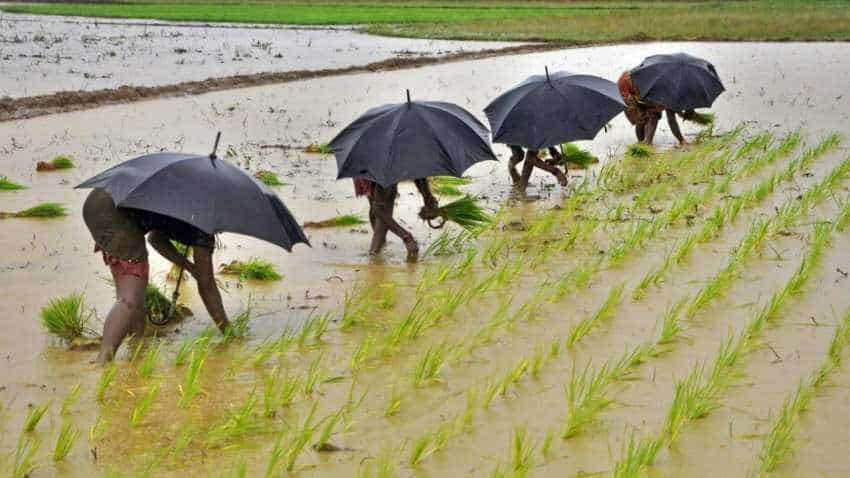Deficit rainfall in northeastern India, crop production could fall
Mountainous northeastern India experienced a 26 per cent deficit during the monsoon, causing fears of falling crop production and scarcity of water, experts said.

Mountainous northeastern India experienced a 26 per cent deficit during the monsoon, causing fears of falling crop production and scarcity of water, experts said. According to officials of the India Meteorological Department (IMD), this year`s deficiency during the four-month monsoon (June-September) is the highest in the last five years.
Seven of the northeastern states are divided into three meteorological sub-divisions -- Assam and Meghalaya; Arunachal Pradesh; and Nagaland, Manipur, Mizoram and Tripura. The eighth state, Sikkim, along with north West Bengal, form a separate sub-division.
According to an official report of the IMD, the Arunachal Pradesh sub-division recorded the highest deficiency of 31 per cent followed by 26 per cent in the Assam and Meghalaya sub-division. The Nagaland, Manipur, Mizoram and Tripura sub-division registered a 22 per cent shortfall between June and September.
Watch This Zee Business Video Here:
"Northeast India and eastern India, comprising sub-Himalayan West Bengal, Sikkim, Gangetic West Bengal, Jharkhand and Bihar, recorded 1,061.9 mm rainfall during the monsoon against the normal (average) rainfall of 1,403.7 mm," the IMD report said.
IMD Director Dilip Saha told IANS: "The insufficient effect of deep depressions and low pressure, besides unfavourable wind patterns caused deficient rainfall in the northeastern region. The IMD headquarters forecast in April also envisaged a deficient rainfall in the northeastern region."
"It would take one more week for the monsoon to withdraw from the northeastern region. Some parts of the region, including Assam and Tripura, witnessed good and excess pre-monsoon rainfall and in the post-monsoon period we expect average rainfall," he added.
According to IMD guidelines, Saha said if the monsoon rainfall was plus or minus 19 per cent it would be termed as average, plus 20 per cent it would be described as excess and minus 20 per cent to minus 59 per cent would be deficient.
Experts predicted that the insufficient monsoon would affect crop production in the northeastern region, where agriculture provides livelihood support to 70 per cent of region`s 45.58 million population (2011 census).
Principal Scientist of Indian Council of Agricultural Research (ICAR) Biswajit Das said that shortage of rainfall would certainly affect the production of crops and various insects might even harm the crop.
"The northeastern region is mostly dependent on rainwater for harvesting of various crops as the irrigation facilities are very limited in the hilly region. The government should create many check dams, minor irrigation projects and develop reservoirs," Das told IANS.
He said that the ICAR has been guiding farmers through various modes, including SMSes, to cope with the prevailing situation. Another ICAR expert said that floods, deficient and excess rainfall are affecting crops, especially vegetables, in the northeast region every year.
Agricultural and water resource expert Manas Majumder said the region, which consists of eight per cent of country`s geographical area and four per cent of the country`s population, has inherent advantages to exploit rain-water harvesting.
"However, the rate of harnessing and utilising irrigation potential has been low since only 20 to 25 per cent of net cultivable land is irrigated. The Accelerated Irrigation Benefit Programme emphasises exploiting surface irrigation through minor irrigation schemes in the region," Majumder told IANS.
Watch This Zee Business Video Here:
In the hilly areas of the region, shifting cultivation, locally known as "jhum", continues to be a dominant mode of food production and the economic mainstay of many households of the tribals, who constitute around 28 per cent of the region`s population.
Get Latest Business News, Stock Market Updates and Videos; Check your tax outgo through Income Tax Calculator and save money through our Personal Finance coverage. Check Business Breaking News Live on Zee Business Twitter and Facebook. Subscribe on YouTube.
RECOMMENDED STORIES

SCSS vs FD: Which guaranteed return scheme will give you more quarterly income on Rs 20,00,000 investment?

SBI 444-day FD vs PNB 400-day FD: Here's what general and senior citizens will get in maturity on Rs 3.5 lakh and 7 lakh investments in special FDs?

Looking for short term investment ideas? Analysts suggest buying these 2 stocks for potential gain; check targets

Small SIP, Big Impact: Rs 1,111 monthly SIP for 40 years, Rs 11,111 for 20 years or Rs 22,222 for 10 years, which do you think works best?
01:56 PM IST










 Delhi weather forecast: Rains likely in city
Delhi weather forecast: Rains likely in city Relief from heat as rains make a comeback to Mumbai
Relief from heat as rains make a comeback to Mumbai Heavy rain likely in parts of Rajasthan over next few days
Heavy rain likely in parts of Rajasthan over next few days Possibility of rain in Delhi in next 3-4 days: IMD
Possibility of rain in Delhi in next 3-4 days: IMD Weather Update: Thunderstorms predicted in parts of Andhra Pradesh till June 12
Weather Update: Thunderstorms predicted in parts of Andhra Pradesh till June 12